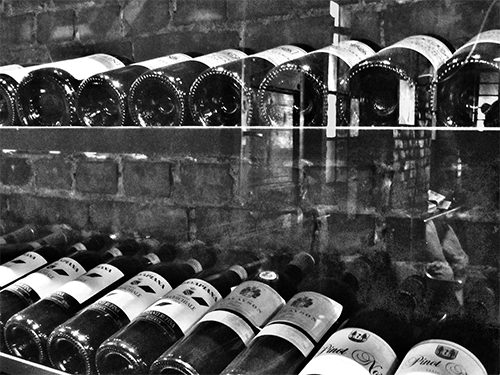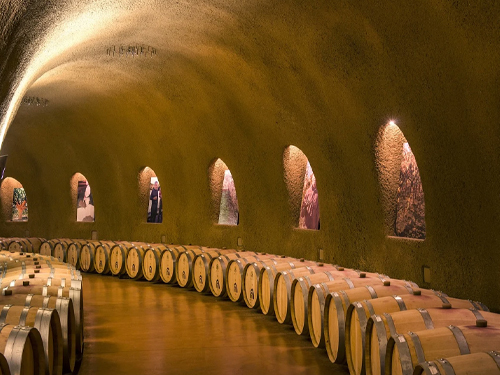Rédigé le 04/08/2020
« Si la vérité est moins belle que la légende, imprime la légende »

Quand un voyageur vient de loin et qu’on lui ouvre sa porte, la loi de l’hospitalité, sacrée entre toutes, exige deux choses : qu’on lui serve du vin et qu’il nous raconte des histoires de son pays. Ainsi, depuis que l’Homme est Homme, il forge des légendes à propos du vin « de chez lui », en même temps qu’on lui fait boire du vin « pas de chez lui ».
Voici deux légendes d’âges et d’origines différentes qui ont fait accéder des vins locaux à une renommée internationale.
Un dragon en Alsace
À cette époque, le Rhin n’avait pas de manières et débordait de partout. Seules quelques collines alsaciennes pointaient le bout de leurs sommets pour prendre le soleil. Nageant dans les eaux froides du fleuve-mer, un dragon (qui aurait mérité un nom) voulu profiter de l’archipel pour se sécher les ailes. Il s’allongea sur une colline et s’endormi. Longtemps. Si longtemps que le soleil finit par faire fondre ses écailles et bouillir son sang, immédiatement bu par la terre. Réveillé par la douleur il eut tout juste la force de se trainer au fond d’une grotte et d’y mourir. Plus tard, quand l’Homme comprit que le vin était indispensable au bonheur terrestre, il cultiva cette colline fertilisée par du sang de dragon qui leur offrit le Brand, un vin blanc aux reflets de feu.
Le coq noir de Florence
Si vous aimez le Chianti, vous aurez forcément remarqué qu’un coq noir est apposé sur chaque bouteille. Si vous n’êtes pas curieux, ouvrez la bouteille et buvez-la. Si vous êtes curieux, ouvrez la bouteille et buvez-là tout en lisant ce qui suit.
Cet emblème tient son origine des guerres perpétuelles que se livraient Sienne et Florence. Pour mettre fin aux bains de sang et fixer définitivement une frontière, on se mit d’accord : au matin, à l’heure où chante le coq, un cavalier partira de Sienne, un autre de Florence. Leur point de rencontre sera la nouvelle limite entre les deux territoires. À Sienne ont pris le plus beau coq à plumes blanches qu’on eut trouvé. Les florentins, eux, choisirent un coq noir famélique. Réveillé par la faim, il hurla plus tôt que son homologue, donnant le départ du cavalier avant le lever du jour. Inévitablement, les deux rivaux se rencontrèrent très proches de Sienne. Voilà pourquoi la majorité du Chianti est, encore aujourd’hui, sous juridiction florentine.













